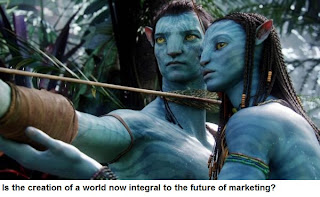 Theo Smith
Theo SmithLooking at BMW as an example of cutting-edge marketing tactics, we can see how the emphasis in consumer interaction has shifted from sales orientation into a dynamic, package deal. Today we want to buy into an experience, not just a physical product. We look at different options and think about aspects such as
· What is the environmental impact of the product I am buying?
· What is the company’s approach to business? (a prime example is Apple’s modern youth vs. Microsoft’s cumbersome heritage)
· What do other consumers think?
· How is the product being developed over time to match my needs?
Amongst other things, these aspects of how a company presents itself and its products to its sector are indicative of the change of focus. A brief history of how marketing has come about can help to put into context how some companies work, and more importantly can show us where to place our marketing focus in future projects:
The Production Concept – 1800’s – 1930s
The industrial revolution was retaliation to the lack of supply verses demand present in almost all sectors. Products were hand-made and took time to produce. The factories then made products on a large scale and the demand was catered for. There was no need for anything beyond having the stock ready to sell, because everything was in short supply.
The Product Orientation – c.1920s – 1964
Then because everything was produced to such a large scale, we achieved a surplus. There were too many factories producing the same products and this homogenisation was countered by product differentiation. Now we had an economy of many different products, but the focus for innovation was from the managers and owners themselves; the products were not always relevant to the market, their main remit was to be different, not necessarily functional or relevant.
The Sales Orientation – 1957 – 1998
This is when the clever stuff started happening and marketing as we know it today was invented. Managers began to choose which of the masses of stock they had access to (as a result of the product orientation and varied products) based on what their customers wanted. A good example here is how supermarkets began to develop, basing their stock on what was bought, letting the consumer decide what should be stocked. This rapidly streamlined all the legacy strategies that had been used (production, product concepts) and paved the way for modern retail with extensive consumer data collection. The Tesco Clubcard epitomises this marketing strategy, taking information on where you shop, what you buy, what combinations of items you buy, what you buy based on where things have been placed in the shop, how much you spend, your demographic profile, and many more. This clubcard also marked the beginning of the new era of marketing strategy where consumers are invited to care about the business and be personally involved. Tesco very simply offered clubcard points to tie consumers in, then offered further discounts on alternative services to create a working long-term relationship between business and customer:
The New Era: Marketing Orientation – 1988 – now
Now companies fight to make you care about them. Their PR reflects an interesting back story you can associate with, and they sell you experiences, not products. Using the internet and further data analysis, companies can target their demographics specifically in creating this experience: Disney Land does not sell a stay in a hotel and a trip to a patch of land with some metal frames that throw you around and some pretty scenery, it sells you an experience. Apple does not sell you a small, low-quality sound output versatile playback device, it sells you the iPod brand, it sells you a whole world of iTunes, the new apple library store and the AppStore, it tells you it is cool and you can be part of its club. This is backed up by economic theory, such as Rostow’s Take off Model, and Daniel Bell’s Post-Industrial Society.
Remembering the basics (Product, Price, Place, Promotion) along with the music-industry-specific Hear-Like-Buy mantra, you can work towards creating a world for your customers to live in.
In summary, a successful promotional effort tying in with a marketing effort to target your specific demographic for business is to focus on developing your service aspect of product delivery. Ask yourself the question:
How can my customer-contact be improved so that the customer experience of my service when delivering my product is best in my field?
In the music industry, this will be a compelling back story along with clear aspirations and good quality music, that is delivered professionally and consistently, matching the expectations your target demographic has.

Theo Smith is an occasional contractor to Wood Wind & Reed and a studio musician. He is currently studying Music Industry Management at University of East London, focussing on how the industry is changing and the development of new talent to embrace its ever-changing structures. The views expressed here are personal and do not represent the views of Wood Wind & Reed or its subsidiaries.












